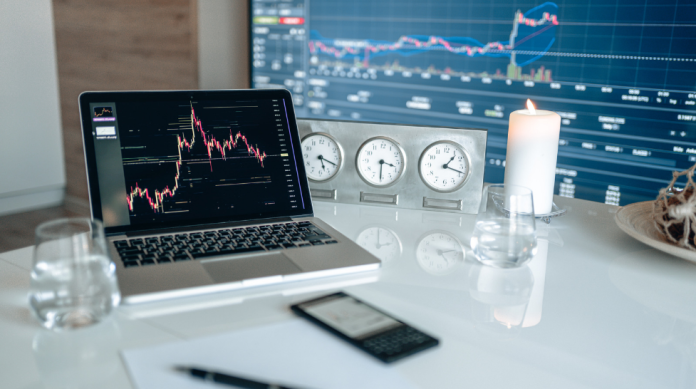Table of Contents
If you’re a trading beginner, then you might consider investing in the foreign exchange (forex) market. When forex trading online, you’ll have access to 128 different currency pairs, including some of the world’s most popularly traded pairs like:
- The Euro against the US dollar — EUR/USD
- The US dollar against the Japanese yen — USD/JPY
- The British pound against the US dollar — GBP/USD
- The US dollar against the Canadian dollar — USD/CAD
The forex market is highly volatile and prices can fluctuate all the time. So, it’s important that you research the market, know how to use fundamental and technical analysis, and have a well-conceived plan or strategy.
One of the most popular strategies to trade forex is day trading. In this article, we will explain what this entails, and run you through a typical schedule of a day trader.
What is day trading?
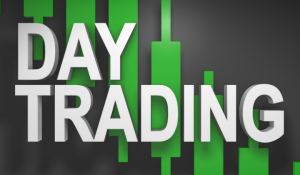
When day trading you will be required to undertake all of your trades in one day. You can choose to make just one trade or multiple, but they will have to be closed by the end of the trading day. Day traders need to be vigilant when it comes to monitoring the market and will be required to keep track of any changes throughout the day and you can analyze the equities in investment.
To prepare for the day ahead, a day trader will rely heavily on an economic calendar to inform their trading style. This will detail the events that take place on that specific day, which could cause prices to fluctuate. It can include reports from central banks, economic surveys and the release of employment data.
Day trading is a short-term trading strategy and a position will be held for minutes or hours. The aim is to profit by responding quickly when market prices change, taking advantage of short-term profitable opportunities. In order to secure profits and reduce the risk of making losses, day traders will use stop orders like a ‘Close at Loss’ and ‘Close at Profit, which will automatically end the trade once a pre-determined level has been reached.
A typical schedule of a Day Trader
The schedule of a day trader will vary based upon the individual, but here’s an example of what a typical day in the life of a day trader might look like:
Before the trading day begins
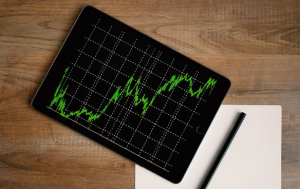
Fail to prepare, prepare to fail — the start of a day trader’s day could be the difference between success in the market and them suffering some painful losses. This is because this part of the day is typically dedicated to:
- research
- reading the news
- taking a look at the economic calendar to confirm any influential events
- accessing online financial resources to check for updates
Following this, a trader will fire up their computer, head to an online trading platform and begin searching the market for viable, potentially profitable, trading opportunities.
The start of the trading day
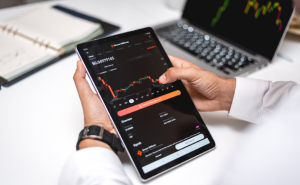
The beginning of the trading day can prove to be the most volatile. As a result, a day trader will likely watch the market and wait for the high levels of volatility to subside. Once they have, opportunities will most likely arise. It’s now a case of the trader deciding which ones suit their specific trading style and acting swiftly to make profits on short-term price changes. Many prices will actually reverse during this morning period, which means that a trader can hope to open a position, profit and close that trade before lunch.
After lunch
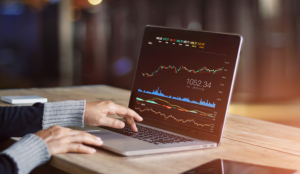
Market activity picks up again when institutional traders return from their lunch break. This is because institutional investors makeup over 90% of the whole forex market and have a significant influence over price movement and volume.
Since the markets close at 4 pm, this second wave of volatility can afford traders the ability to open another trade before the day ends. If a day trader has open positions, they will continue to analyse them, whilst scouting out new opportunities to profit. As the end of the day draws near, traders will close all of their positions to avoid potential losses.
Once the market has closed
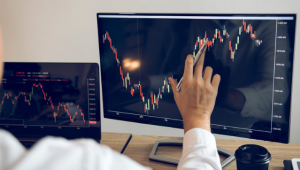
Once all trades have been finalised and the market is closed, traders will take a look back at their day and review how well they performed. Many traders will actually note down what went well and what could have been improved in a journal, to help them to learn from their mistakes and emulate their successes in the future.
Conclusion
When investing in the forex market, it’s a good idea to have a well-conceived strategy so that you have a solid action plan each time you enter the market. But there is no one-size-fits-all strategy.
Day trading requires you to monitor the markets throughout the day, so it may not suit your trading style or lifestyle. The best way to figure out your trading style, and decide the right strategy for you, is to start trading on an online trading platform, where you could open a demo account and practice trading without putting your capital at risk.


